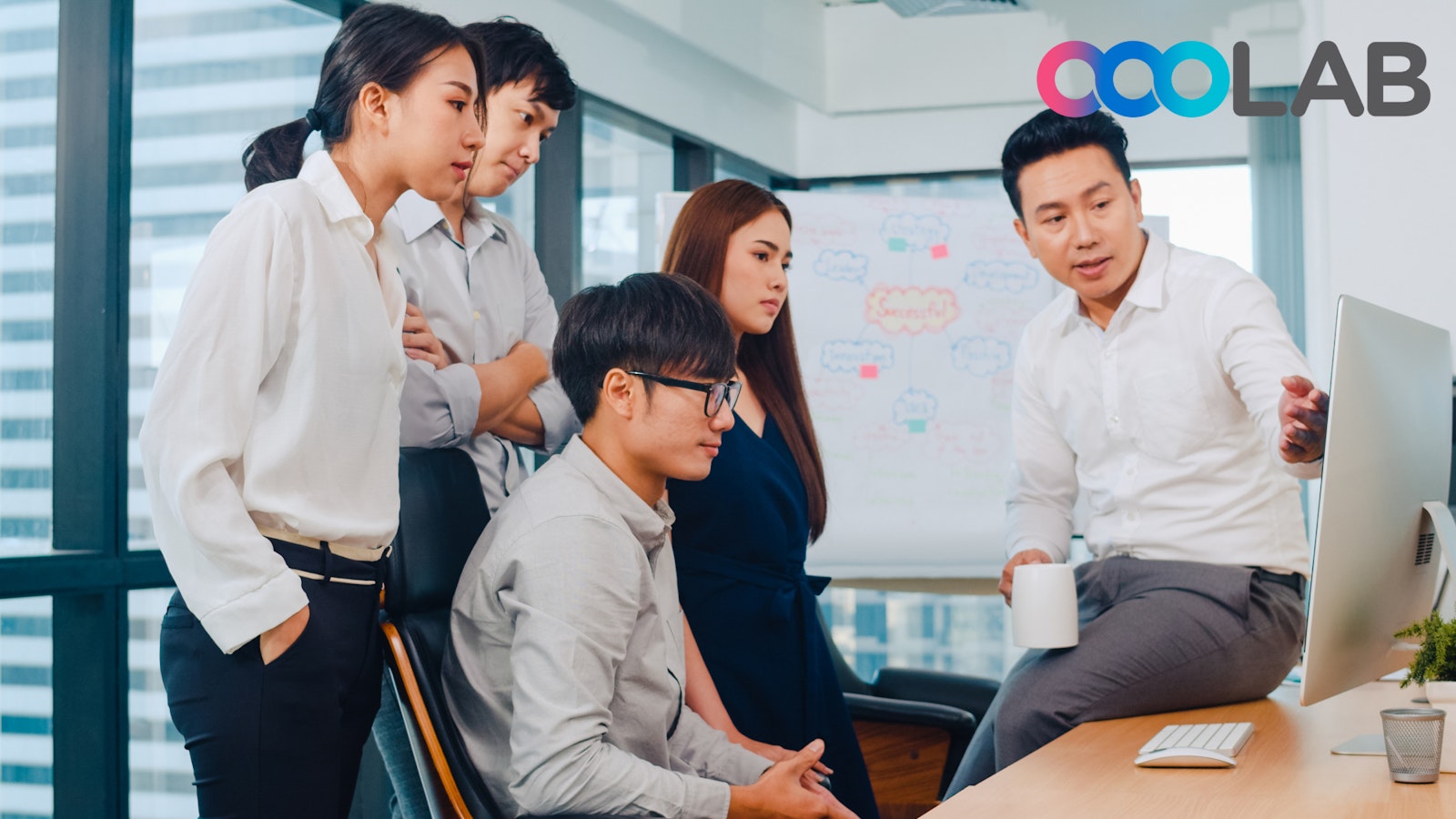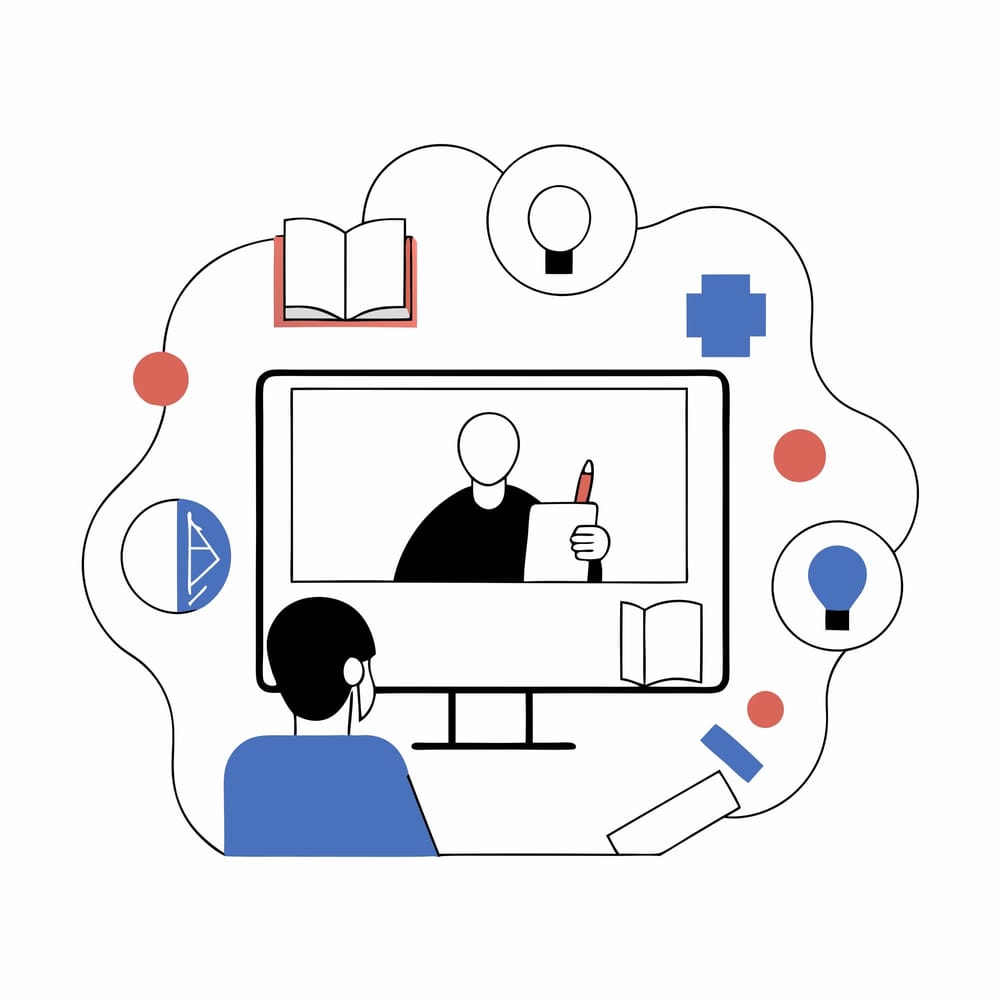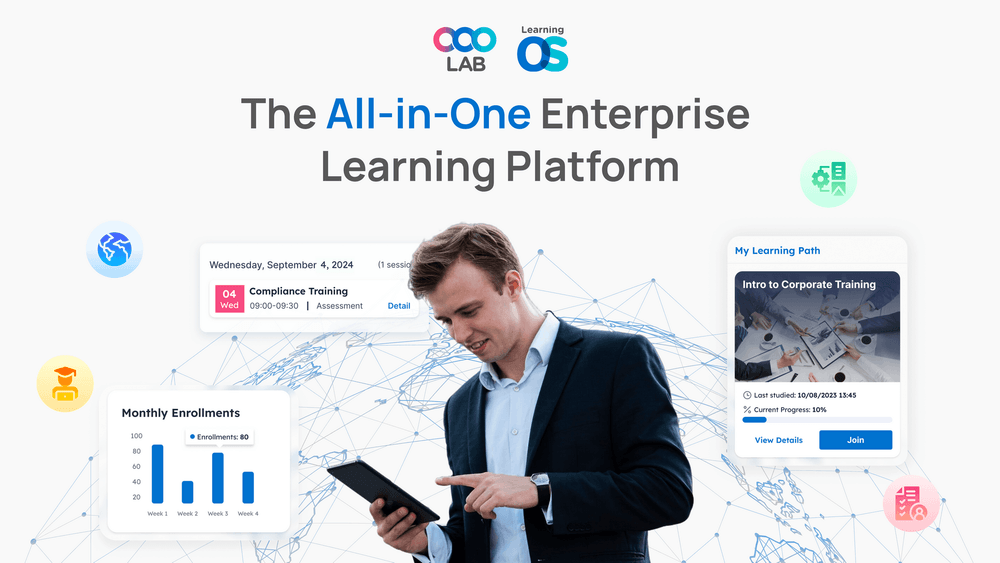

Content I. Why Employee Capability Development Is Critical in Today's Workforce II. Core Features Of An Advanced Capability LMSIII. Overcoming Challenges In Implementing An Advanced LMS |
In today’s fast-moving, skills-based economy, organizations must do more than offer training—they need to build real workforce capabilities. An advanced Capability LMS empowers businesses to develop talent strategically, aligning individual growth with performance goals.
By combining AI-driven personalization, performance tracking, and integrated feedback, this type of Enterprise LMS goes beyond content delivery to become a driver of organizational agility and innovation.

But with new systems come real challenges—from overcoming resistance to adoption to ensuring the platform works seamlessly with existing HR tools.
This article explores how the right LMS for capability development not only builds future-ready teams but also offers clear strategies to implement it effectively and sustain long-term engagement.
To effectively support workforce development, a modern Capability LMS must go beyond just content delivery. It should empower learners with personalized growth opportunities while giving organizations the tools to track progress and close skill gaps. Below are the core features that define a future-ready platform:
Every employee’s development journey is different. An advanced LMS uses AI to recommend learning content tailored to an individual’s role, current skill level, and career aspirations. By continuously analyzing user data and performance, the system adapts in real time—offering targeted content that supports capability-building without overwhelming the learner.
>>> Read more: How AI-Driven LMS Solutions Personalize Skill Development for Employees
Modern organizations need to measure real outcomes, not just course completions. With a LMS with performance-based assessments, learners demonstrate their capabilities through simulations, scenario-based tasks, and applied challenges.
These assessments provide actionable insights into skill readiness, helping managers monitor progress in a meaningful way.
>>> Read more: Maximizing ROI with an All-in-One Enterprise LMS
>>> Read more: Using a Competency and Skill LMS to Assess and Track Employee Growth
A robust Capability LMS connects learning content directly to your organization’s competency framework. It identifies the key capabilities needed for each role and highlights any gaps between current and desired skill levels.
With this insight, L&D teams can deliver targeted interventions and track progress against measurable outcomes
Timely feedback helps turn learning into performance. A manager-friendly LMS for skill tracking provides visual dashboards, automated progress reports, and space for manager-learner feedback loops. With data-driven training with LMS, both employees and team leaders can track development in real time and align learning efforts with business priorities.
>>> Read more: Must-Have Features in an Enterprise LMS in 2025
In this section, we’ll discuss the most common obstacles businesses encounter and provide actionable strategies to address them effectively, ensuring a seamless adoption and sustained success of the LMS platform.
Whether it’s (1) overcoming resistance to change, (2) integrating the new system with existing tools, or (3) ensuring long-term engagement, these challenges can hinder the full potential of the LMS.
To ensure successful adoption, it’s essential to provide clear communication about the LMS's benefits and its alignment with the organization's goals. This resistance often stems from:
Uncertainty
Lack of understanding
The perception that new systems will increase workload without offering meaningful value.
That’s why clear, upfront communication is essential—not just about how the system works, but why it matters.
Communicating how the LMS aligns with the organization’s broader goals helps employees see the bigger picture. When employees understand that the platform isn’t just another tool—but a strategic investment in their growth, efficiency, and career development—they’re far more likely to engage.
Supporting this message with (1) real examples, (2) leadership endorsement, and (3) ongoing feedback loops can further reduce friction and build trust.
One of the most common challenges in deploying a new Capability LMS is ensuring it fits seamlessly into an organization’s existing digital infrastructure.
Without smooth integration, valuable performance and learning data can become siloed—limiting insight and creating friction across teams. A future-ready Enterprise LMS must:
Seamless data synchronization: A Capability LMS should easily connect with your existing HR systems to automatically pull in employee data like roles, departments, and performance metrics. This reduces manual entry and ensures up-to-date records.
Pre-built integration options: Many advanced LMS platforms come with plug-and-play integrations for popular HRIS, payroll, and communication tools—saving time and removing the need for technical setup.
>>> Read more: Customization Options for Enterprise LMS
>>> Read more: Integrating Advanced Features into your LMS - API and Single Sign-On (SSO) Integration Explained
Streamlined user experience: Integration ensures learners can access training from familiar platforms (like Slack or Microsoft Teams), improving adoption and reducing friction during the transition.
Unified reporting across systems: Integrated platforms allow HR leaders to generate combined reports that track training progress, performance outcomes, and skill gaps—making decision-making more data-driven.
Support for future scalability: A well-integrated LMS supports your growth—whether you're adding new tools, expanding teams, or evolving your learning strategy—without requiring a complete overhaul of your current systems.
For an LMS for capability development to be successful, it’s essential to maintain long-term engagement, particularly when employees are considered adult learners.
As Forbes highlights, adult learners have unique needs and motivations compared to younger or entry-level trainees, often seeking practical, real-world application for their learning. Ensuring that the training experience remains relevant and engaging requires a thoughtful, ongoing approach.
Personalized learning paths and real-time feedback are vital components of an LMS that resonates with adult learners, helping them feel that the training is directly relevant to their daily roles and career goals.
LMS for performance management should cater to employees’ need for flexibility and real-world applicability. Offering opportunities for them to apply what they’ve learned in practical scenarios, such as on-the-job challenges or peer collaborations, can significantly boost engagement and retention.
Creating a culture of continuous learning and providing ongoing support—such as mentorship, career counseling, and resources for professional development—ensures that employees remain committed to using the LMS.
By acknowledging the motivations of adult learners and continuously offering value through the LMS platform, organizations can foster long-term engagement, ensuring that the LMS becomes a central part of their employees' career growth and skill development.
Book a Free Demo with us. Bring your Training and Learning to a new height with LearningOS.

An advanced Capability LMS empowers organizations to go beyond basic training by aligning learning with real performance goals, personalized development paths, and continuous feedback. With features like competency mapping, skill gap analysis, and real-time progress tracking, it supports agile, data-driven talent development. When integrated smoothly with existing HR tools and supported by engaging, role-relevant content, it becomes a long-term solution for building a future-ready workforce.
At OOOLAB (pronounced 'uːlæb'), our mission is to make complex learning operations simple. We aim to positively impact the lives of over 1,000,000 learners and educators by the end of 2026.
OOOLAB's LearningOS provides educational institutions and corporate enterprises with an all-in-one solution to create and deliver engaging learning experiences.
We meet organizations' needs or support your growth. We provide undivided attention. We provide::
Dedicated success manager: We offer direct communication with a real human who'll discuss your enterprises unique learning operations and goals.
Personalized setup: Our team will help you transition to LearningOS on your schedule, one step at a time.
Around the clock support: Get help from us any time, and in any time zone.
Reach out to us at: LinkedIn, FaceBook
1. What are the main benefits of LearningOS?
Our platform is easy to use and automates all aspects of your learning operations. It efficiently manages complex tasks, allowing you to concentrate on delivering exceptional learning experiences.
2. What main features does LearningOS offer?
Our all-in-one software solution combines a Content Management System, a Learning Management System, content authoring tools, and a mobile friendly Learner Portal.
3. Can your platform be used for corporate enterprises?
Absolutely! LearningOS is an Enterprise LMS that is a great fit for corporate learning. In fact, we have clients with up to 700,000 employees using LearningOS! Upskill your workforce by creating and assigning interactive eLearning content while effortlessly tracking employee progress.
4. Who currently uses your platform?
Our platform is currently used by over 120,000+ learners, parents, and employees across 21 countries worldwide!
5. What types of content options are available on your platform?
We offer ready-to-go curriculums for various educational purposes or our expert design team can build a custom course for you. We can also upload your existing learning materials and enhance them digitally.
6. What is unique about LearningOS?
Our platform, designed by educators for educators, provides you with all the tools you need to scale. Build and promote your own hybrid and blended learning courses and save money on licensing fees by owning your own proprietary content.
7. How can I get started?
Schedule a meeting with our experts and we’ll talk about how our platform can address your unique challenges and help to grow your business.